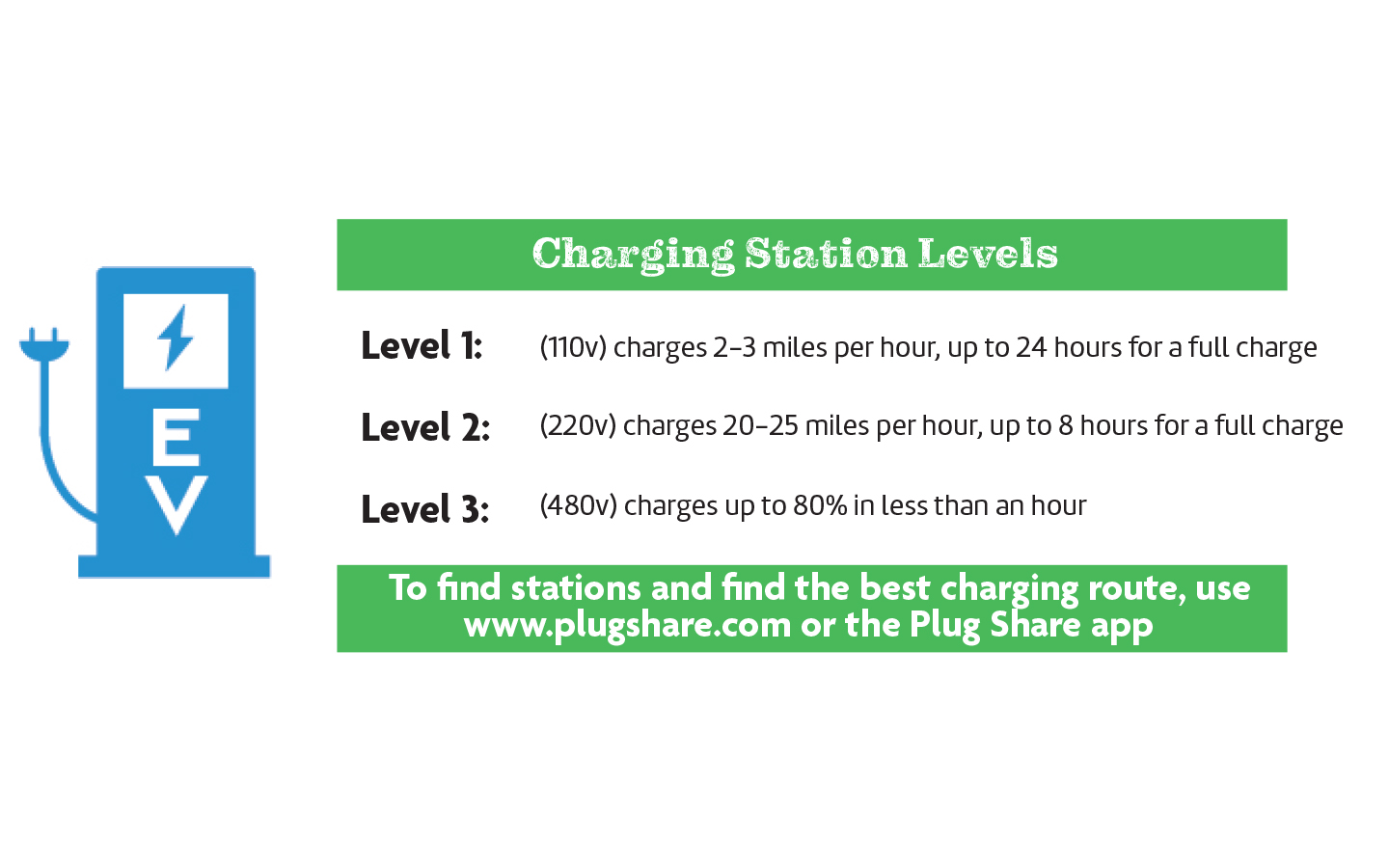Each year, more Americans enjoy road trips as a fun and adventurous pastime. With all the talk of all-electric vehicles (EVs), you might wonder if they can be used for long-range trips.
If you anticipate traveling more than 250 miles in an EV (the average distance most can travel on a single charge), there are some pre-planning tips to consider for recharging. First, there are three levels of charging stations: Level 1 (110V), taking up to 24 hours to fully charge at 2-3 miles per hour; Level II (220V) will charge at approximately 20-25 miles per hour, requiring up to 8 hours to fully charge and Level III (480V), commonly called a DC fast charger or Tesla Supercharger, which can charge up to 80 percent in less than an hour – found mainly off major highways or interstates.
Another consideration is that different vehicles have connector ports customized to their make and model. These ports are compatible with and found on different levels of charging stations. For example, Tesla has their own private standard port which works with their Tesla Supercharger charging station.
DC fast chargers, which are used by all other manufacturers, will require additional planning. You will need to map your route and pre-determine where charging stations are located along your route before going on the road.
A helpful website is www.plugshare.com. Once you input your trip information, the site will then provide the best route and show different stations along the way. You can also download their app on your smart device to use while on your trip for up-to-date information. This site is updated regularly; but you will need to verify that the stations you intend to use are active by calling ahead to the location. If you are in a Tesla, its navigation system shows all available Superchargers and all other network connected chargers on and near your route. The Tesla superchargers are easy to locate since they are installed every 150 miles on all major interstates throughout the country.
The final tip is to make sure your end destination has a charging station. Depending on whether it is a hotel, business or a vacation spot, it is best to confirm that a charging station is onsite along with payment options. If there are no Level 2 or 3 chargers, then there should be at least a 110 volt outlet that can be used if the establishment allows. Check with the staff or owner to determine the accessibility of the outlet. If your destination does not provide a suitable charging option, check for the closest location and determine if it fits your needs.
Driving an electric vehicle on a road trip can be a seamless experience; it just takes a little extra preparation before you hit the road. Know your route, plan some extra time for charging and enjoy the ride!

